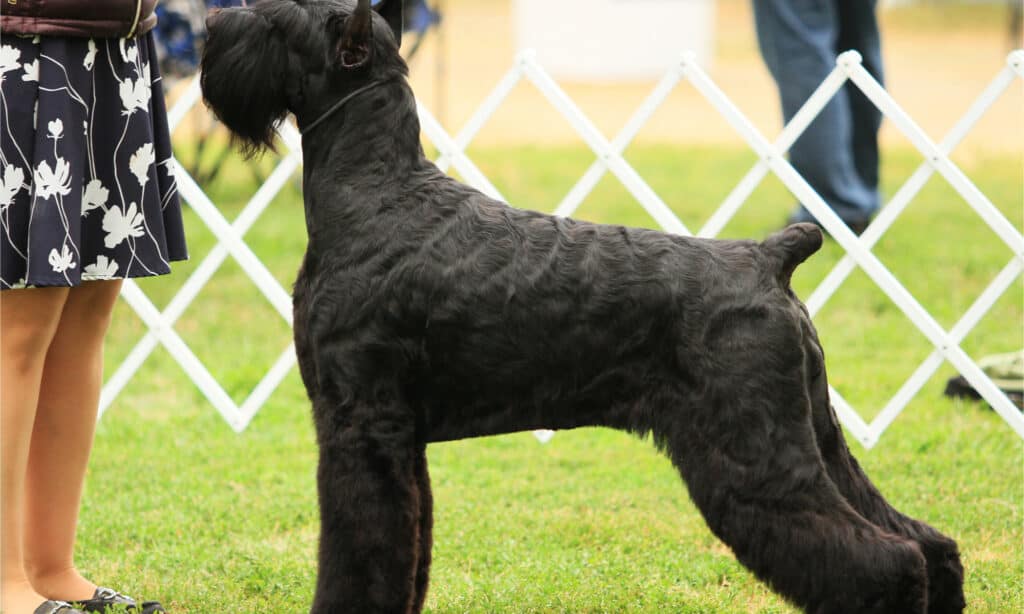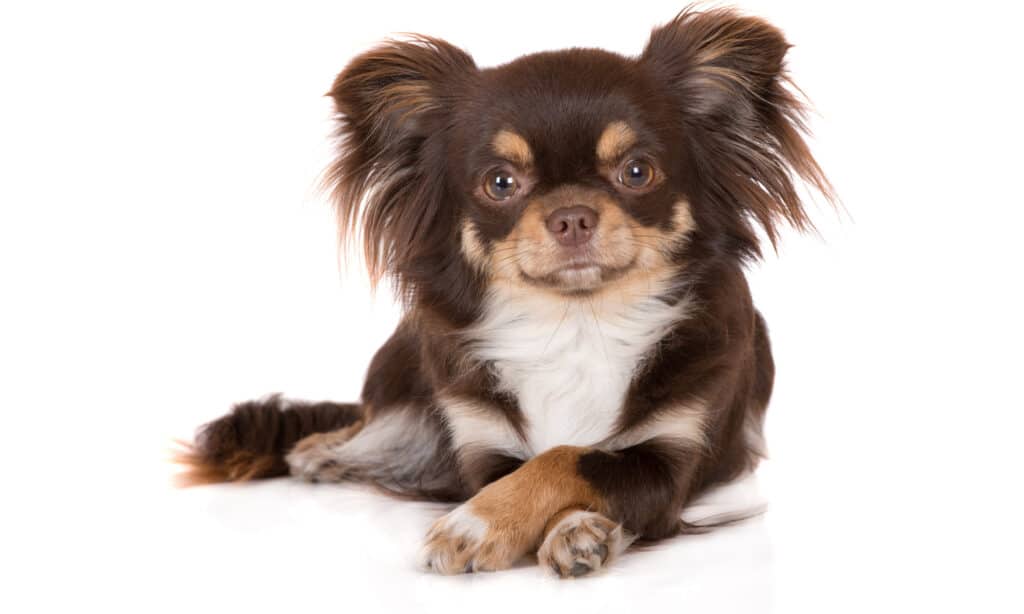Dogs have evolved since wolves were domesticated by man. Every corner of the world has its own unique breeds. Each dog breed carries the characteristics of its region. The number of breeds increases as man continues to create breeds that could fit their needs and lifestyle.
But what is the current number of true dog breeds? Let us look at these questions and know all there is to know about the true dog breeds of the modern world.
What Are the Bodies of Authority When It Comes to Canine Registries?
The registration of canine breeds is governed by specific groups. The United States has the American Kennel Club (AKC). Europe has the Continental Kennel Club (CKC). There is also the Federation Cynoligique International (FCI).
Each of these governing bodies has its own set of protocols for determining dog breeds. That is why it is difficult to set a final number of dog breeds. The FCI only recognizes 360 dog breeds, while the AKC only acknowledges 195. Because of this, the total number of current dog breeds may be between 195 to 500 worldwide.
How Do These Governing Bodies Establish a New Dog Breed?
About 200 years ago, there was a limited number of dog breeds. People created their own dog breeds back in the Victorian era. That was when the number of breeds started to increase. It was easy to come up with your own dog breed. Even so, it was a difficult process to get a governing body to recognize your breed.
Most breed organizations consider a dog breed’s popularity first. The population requirements are important as well. If the breed does not have these two components, the governing body will not accept it. The AKC finds it important for the breed to have endured for more than three generations. The breed must also be under the miscellaneous class for more than three years before the board reviews the breed. Only 25 new dog breeds have been recognized by the AKC since 2010.

At dog shows, judges rank dogs based on their knowledge of the breed standard.
©Canden Scales/Shutterstock.com
What Are the Different Classifications of Dog Breeds?
A breed recognized by the AKC in the United States will be under a specific classification. This will group the breed with other dogs of a similar breed. There are seven recognized breed classifications in the AKC.
Many dog shows like the AKC National Championship, dogs are shown in seven different groups and organized by the original work that each breed was bred to do. These dog breeds that are then judged in each group becomes one of the final seven dogs given the Best in Show Title.
These dog breeds are the following:
1. Sporting Dogs
These dogs help hunters to retrieve game fowl. They are often great swimmers, allowing them to get the birds that fall in the water. Some sporting dogs have thick coats that protect them from bushes when they run through the woods.
Sporting dogs are well-rounded furry companions. They enjoy outdoor activities, especially hunting. Their coats are water-repellent, and they have special skills in the woods. Retrievers, setters, pointers, and spaniels are the four types of sporting dogs. Popular breeds under sporting dogs are German Shorthaired Pointers, Labrador Retrievers, and Cocker Spaniels. Sporting dogs need intense daily exercise.
2. Working Dogs
The working dog group has many ancient breeds. These dogs are hard workers. They aid humans at work. They are large, strong, alert, intelligent, and watchful. Working dogs are also protective of their humans. They can pull sleds, guard, and rescue. Great Danes, Rottweilers, Boxers, Siberian Huskies, and Doberman Pinschers are popular working dogs.

Doberman pinschers are highly intelligent and excel as police, military, and service dogs.
©SasaStock/Shutterstock.com
3. Herding Dogs
This classification has dogs that are bred for herding, protecting, and gathering livestock. They can control the motions of other animals they target. These dogs are also known for herding family members, especially children.
The dogs in this group are highly trainable and very intelligent. That is why these dogs are often used in the military and police fields. Pembroke Welsh Corgis, German Shepherds, Belgian Malinois, and Border Collies are popular herding breeds.
4. Non-Sporting Dogs
This breed designation houses dogs that are not fit to belong in other groups. This is a diverse group. The dogs vary in general appearance and background. That is why they cannot go to other more specific classifications. Popular non-sporting dogs are Keeshonds, Chow Chows, French Bulldogs, Dalmatians, and Poodles.
5. Toy Dogs
These dogs are bred for the sole purpose of companionship. Very small breeds belong to this group. They are ideal for people who have small living spaces. These dogs are adaptable, affectionate, and sociable. They are also protective and full of energy. Pugs, Chihuahuas, and Shih Tzus are popular toy dog breeds.

Chihuahuas are compact dogs with big personality that like nothing better than spending time with their favorite human.
©otsphoto/Shutterstock.com
6. Hound Dogs
The dogs in this group are bred to hunt. Sighthounds chase down the agile prey, such as jackrabbits and antelope. Scenthounds track down the prey. Hounds are expert hunters with great stamina. They can run and dig while staying on the scent of their prey. Beagles, Pharoah Hounds, and Afghans are popular hound dogs.
7. Terrier Dogs
This group can hunt down small animals. Short-legged ones can dig into a rodent burrow and go after the prey. Larger terriers are meant for more risky hunts. Terriers are energetic, feisty, and very protective. They can be quite stubborn and challenging to train. Cairn terriers, Bull terriers, and Airedale terriers are popular breeds in this group.
What Are the Criteria for Recognizing a Breed?
For the AKC, the new breed must be recorded in the Foundation Stock Service (FSS). Then, there should be a written document of request to compete in the Miscellaneous Class category. This request must come from the National Breed Club. Then, the new breed must meet the following criteria:
- There is a significant interest and following in the breed. There should be at least 100 active household members of a National Breed Club.
- The AKC needs to evaluate and then approve the breed standard of the club. It will also review the club’s bylaws and constitution. AKC field staff must complete breed observations as well.
- The breed must be present in at least 20 states.
- There should be a recorded population of about 300 to 400 dogs in the country. The pedigree should have at least three generations. The dogs in the pedigree must all have the same dog breed.
How Do Dog Breeds Develop?
Breeds may differ, but every dog still belongs to the same species. Years of creating the right dog have created many breeds. That is why dogs are mammals that have the most variations.
Humans use selective or artificial breeding. This allows humans to choose dogs with specific traits that the puppies will likely inherit. These traits will then survive in the puppies of each generation until the traits become natural in the breed.
One example is a dog with white paws and a black coat. If the breeder wants to have puppies with the same traits, the dog must mate with another dog with a black coat and white paws. The breeder will likely get puppies with the desired characteristics.
Selective breeding has enabled man to create dog breeds that specialize in certain environments or tasks. This made certain breeds popular for specific jobs. Beagles can sniff produce at airports. German Shepherds can detect drugs, bombs, or trapped people. Golden Retrievers can guide blind people. Belgian Malinois can support soldiers on the battlefield.
Dachshunds can chase badgers out of their underground homes. This breed comes in three sizes — standard, mini, and tweenie. Standard dachshunds hunt larger rodents like rabbits. Mini dachshunds can chase smaller rodents into their burrows. Tweenie dachshunds are smaller than standard dachshunds but larger than mini dachshunds. Breeders noticed dachshunds developing shorter legs.
So, they started breeding the ones with shorter legs. Modern dachshunds have shorter legs than the dachshunds of long ago.

Due to selective breeding, today’s dachshunds have shorter legs than their ancestors did.
©Shedara Weinsberg/Shutterstock.com
Products That Can Help You Get the Most Out of Your Dog
Purebred or mixed breed, your dog has a unique collection of traits. It is up to you to discover your pup’s skills and help sharpen them. Below are some products that can bring out the best in your dog.
Healthy Dog Food
Some dogs are prone to gaining too much weight. Giving the best dog food for weight control can help your pup maintain a healthy weight. Some large breeds can become overweight easily. Feeding them the best large breed dog food can help them maintain a healthy weight.
Reliable Leashes
Walking your dog can be a fulfilling and stress-relieving activity, especially with the right leash and harness. The best hands-free dog pet leash can keep your dog secure while you concentrate on hiking. These hands-free leashes allow you to maintain control of the hike and your balance while making sure that your dog is by your side.
Regular walks with your smaller breed can be safer as well by using the best retractable dog leash. This type of leash allows you to keep your dog back in case there are other dogs, skateboarders, cyclists, or obstacles on the street. It can also let your dog explore and stop at a certain distance.
Strong Fences
Choosing one of the best no dig fences for dogs can keep your large dog inside your fence. This type of fencing can ensure the safety of your dog and the people in your neighborhood.
Conclusion
Different dog breeds have different traits that serve different purposes. Each breed needs specific care and attention. Knowing your dog’s breed and genetics can give you that valuable information. Whatever breed you have in your home, you can rest assured that you have a loyal and protective companion by your side.
List of ‘True Dog Breeds’
Here is a summary of our list of the total number of ‘true dog breeds’:
| Rank | True Dog Breeds |
|---|---|
| 7. | Sporting Dogs |
| 6. | Working Dogs |
| 5. | Herding Dogs |
| 4. | Non-Sporting Dogs |
| 3. | Toy Dogs |
| 2. | Hound Dogs |
| 1. | Terrier Dogs |
Next Up…
- The Coolest Dog Breeds – Check out these super cool dog breeds!
- Best Big Dog Breeds – What dog breeds are the largest? Keep reading to find out!
- White Fluffy Dog Breeds – The American Eskimo is on this list, but what about other breeds? Click to learn more!
The photo featured at the top of this post is © Canden Scales/Shutterstock.com
Ready to discover the top 10 cutest dog breeds in the entire world?
How about the fastest dogs, the largest dogs and those that are -- quite frankly -- just the kindest dogs on the planet? Each day, AZ Animals sends out lists just like this to our thousands of email subscribers. And the best part? It's FREE. Join today by entering your email below.
Thank you for reading! Have some feedback for us? Contact the AZ Animals editorial team.







